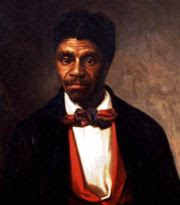Past elections since independence and how they shaped the country’s politics
By MACHARIA GAITHO
Last updated: Sun, Dec 23, 2007 23:06 PM (EAT)
In the absence of a political opposition, the churches, academics, the Law Society of Kenya and other groupings had constituted themselves into the unofficial opposition. They pushed dissent to the limit until politicians shunned by the system, notably Oginga Odinga and ex-Cabinet ministers Kenneth Matiba and Charles Rubia, took up the cudgels. Under great pressure President Moi eventually cracked and allowed removal of Section 2A of the Constitution which had made Kanu the sole legal party.By the time multi-party elections were called at the end of 1992, the main opposition grouping, Forum for Restoration of Democracy (Ford) had split into two, Ford Kenya led by Mr Odinga and Ford Asili led by Mr Matiba. There was also Mr Kibaki’s Democratic Party, formed shortly after revocation of Section 2A.
The Electoral Commission, dormant since independence, had been re-activated under the chairmanship of disgraced former High Court Judge Zacchaeus Chesoni.
There were a total of 711 candidates vying for 188 seats, Kanu was the only party that managed to get a candidate in every constituency. Other major parties fielding parliamentary candidates were DP (153), Ford Asili (141) and Ford Kenya (138).
Those were also the parties that provided the main opposition presidential candidates, Mr Kibaki, Mr Matiba and Mr Odinga respectively.
At the polls held on December 29, President Moi got through on the strength of the split opposition with just 36.8 of the vote ahead of Mr Matiba (26.8 percent), Mr Kibaki (19.3 percent) and Mr Odinga (17.7 percent).
Kanu also got the majority of Parliamentary seats, 94, compared to Ford Asili, 31, Ford Kenya, 30 and DP, 23.
1997: Moi still rules
With Kanu still intact and the opposition continuing to splinter, the “Moi Must Go” euphoria of first election with return of multi-party was markedly muted in 1997.
Oginga Odinga had died and his son Raila’s attempt to dethrone Mr Michael Wamalwa as party chairman had failed. The younger Odinga had quit Ford Kenya and taken over tiny outfit called the National Development Party. Ford Asili had been marked by infighting between Mr Matiba and a faction led by secretary-general Martin Shikuku. Mr Matiba, in any case, was threatening to boycott the elections in the “No Reforms, No Elections” campaign.
The elections approached with Mr Kibaki’s DP as the most stable and organised opposition party. As in 1992, calls for opposition unity as the only strategy to dislodge Kanu went unheeded.
Mr Kibaki was clearly the strongest opposition candidate, but he still could not remove President Moi who came back, for his final term, with an improved 40.1 percent of the vote. Mr Kibaki was second with 31.1 percent followed by Mr Odinga with 10.9 percent, Mr Wamalwa 8.3 percent and Mrs Charity Ngilu of SDP with 7.7 percent. Another nine candidates in the large field of 14 shared the rest of the vote, with none of them even reaching the one percent mark.
2002: Project Uhuru
Mr Moi was closing out his final term and in a stunning move picked on rookie politician Uhuru Kenyatta as his chosen successor.
Prior to that he had made another bold move enticing the NDPs Raila Odinga, who shortly after the 1997 polls had abandoned his confrontational stance and gone into partnership with the ruling party. The gradual moves saw, as the 2002 polls approach, Mr Odinga and some of his NDP MPs appointed into the Cabinet. Then the NDP dissolved itself and merged with Kanu.
Ironically, all that was meant to aid Project Uhuru. In the Kanu Delegates Conference called to seal the merger, Mr Odinga replaced long-serving secretary-general Joseph Kamotho. Another major casualty was long-serving vice president and party vice chairman George Saitoti, who was not in the line-up drawn up by President Moi for the new structure of four vice chairmen.
The opposition was not sleeping. After two previous defeats Mr Kibaki had become convinced that the only way to remove Kanu was through opposition unity. In a move strongly backed by youthful backbench MPs and civic society groupings, Mr Kibaki teamed up with Mr Wamalwa and Mrs Ngilu to form broad-based alliance.
As 2002 approached, it had crystalised into, first, the National Alliance for Change. Then it become a political party, the National Alliance Party of Kenya (NAK), which was achieved through a change of name of Mrs Ngilu’s National Party of Kenya (NPK).
The alliance picked Mr Kibaki as its candidate and boosted by ministers who defected from Kanu after Mr Kenyatta was named the candidate, went on to win the polls.
Sources: Weekly Review archives, Nation library, Electoral Commission website, Institute of Education in Democracy National Elections databook.
Past elections since independence and how they shaped the country’s politics

